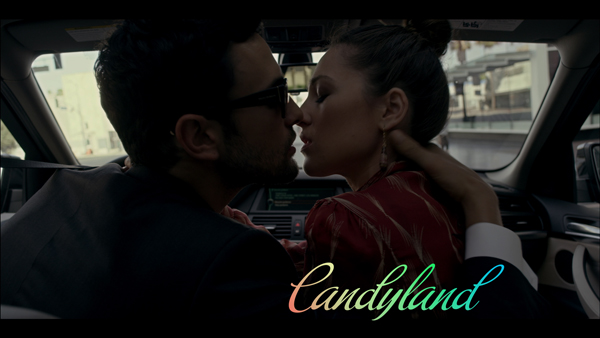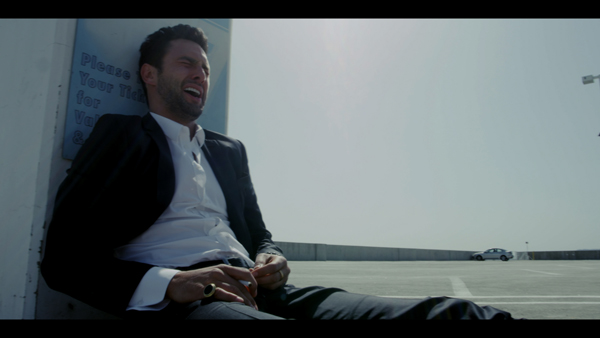Jack Smith (Noah Mills) seems to have it all. He's handsome, like a print ad model from a high-end glossy magazine. He's stylish, in that black and white, minimal way that screams money and good genes. He has means enough to engage in retail therapy at Dolce and Gabbana. And he's got a lovely girlfriend, Amber Leahy (Roxy Olin).
Chomping down prescription drugs (Adderall, Ritalin, Vicodin, and Viagra) like what used to be called nickel candy, he's resembles a kid romping through his effortless, hipster lifestyle in the playground of Los Angeles. The story spans the course of one day. We know nothing of Jack except that he seems to be a success. He's in the movie business, he takes a meeting, and he breaks down a script. To judge by initial appearances, he's having the time of his life. As a matter of fact, his lifestyle is more a charade than a game and, as we soon find out, Jack is not a winner, not by a long stretch. He's more a holy mess.

Candyland, 2013, written and directed by Jouri Smit, is a 19-minute art film that shows, to devastating effect, the extent to which prescription drug abuse has reached epidemic levels. It demolishes the stereotype we might have of scruffy pill poppers, convening in alleys, and resorting to crime to feed their habit. So much happens, so much is conveyed, that it's hard to believe that everything takes place in less than a third of an hour.
Particular attention is paid to visuals. This includes the cityscape of Los Angeles seen from a moving car, including the venerable Gehry Concert Center as well as Jack's facial expressions and physical ticks. Not just because this is Los Angeles, where snap judgments and first impressions are the sum total of one's knowledge of someone but because -- and this hits you like a thunderbolt -- it's silent film. Not silent as in the pre-talkie era with pipe organ or orchestral accompaniment; but silent in the way that, though ambient noises can be heard, voices can't. The cumulative effect is one of watching a stranger self-destruct before our eyes. It's chilling, this downward spiral, especially the inevitable ending, but it also suggests the unfortunate way we visually evaluate someone's trajectory by appearances and have no idea what's really going on. How can you help someone if nothing seems to be wrong?

It's an intelligent and compelling story. The lack of words, really, is a touch of genius: how could words otherwise describe how this could happen? How could have been allowed to happen? It's the21st version of Ralph Ellison's The Invisible Man. Depending on the pharmaceutical ingested, action speeds up or slows down. Likewise with the music, which feels like the palpitations of his desperate heart.
Everything's generic because the epidemic is so ubiquitous yet anonymous. Jack Smith: an innocuous name, an AnyMan. He could be the person in front of you waiting for his car at the club. He wears black and white, to belie the grayness that roils beneath his posh, stubbled veneer. You wouldn't notice any problem unless you paid attention, which is what this film makes you do. It's a harrowing tale that spirals downward. Once you orient yourself to the lack of dialogue, it seems more expansive - much more expansive- than a scant 19 minutes would suggest.

There's a Gabriel Garcia Marquez short story, The Old Man With Enormous Wings, in which a fat, wheezing angel literally drops out of the sky into in a small Columbian town. We are delighted to learn that this apparent homeless person is really a messenger of God. Isn't it funny how, with a film like Candyland, you can reverse the scenario, make a handsome guy a hellish disaster, and we're disappointed? That's the point of "Candyland." Prescription drug abuse is prevalent and rampant; it affects the people you'd least expect.
